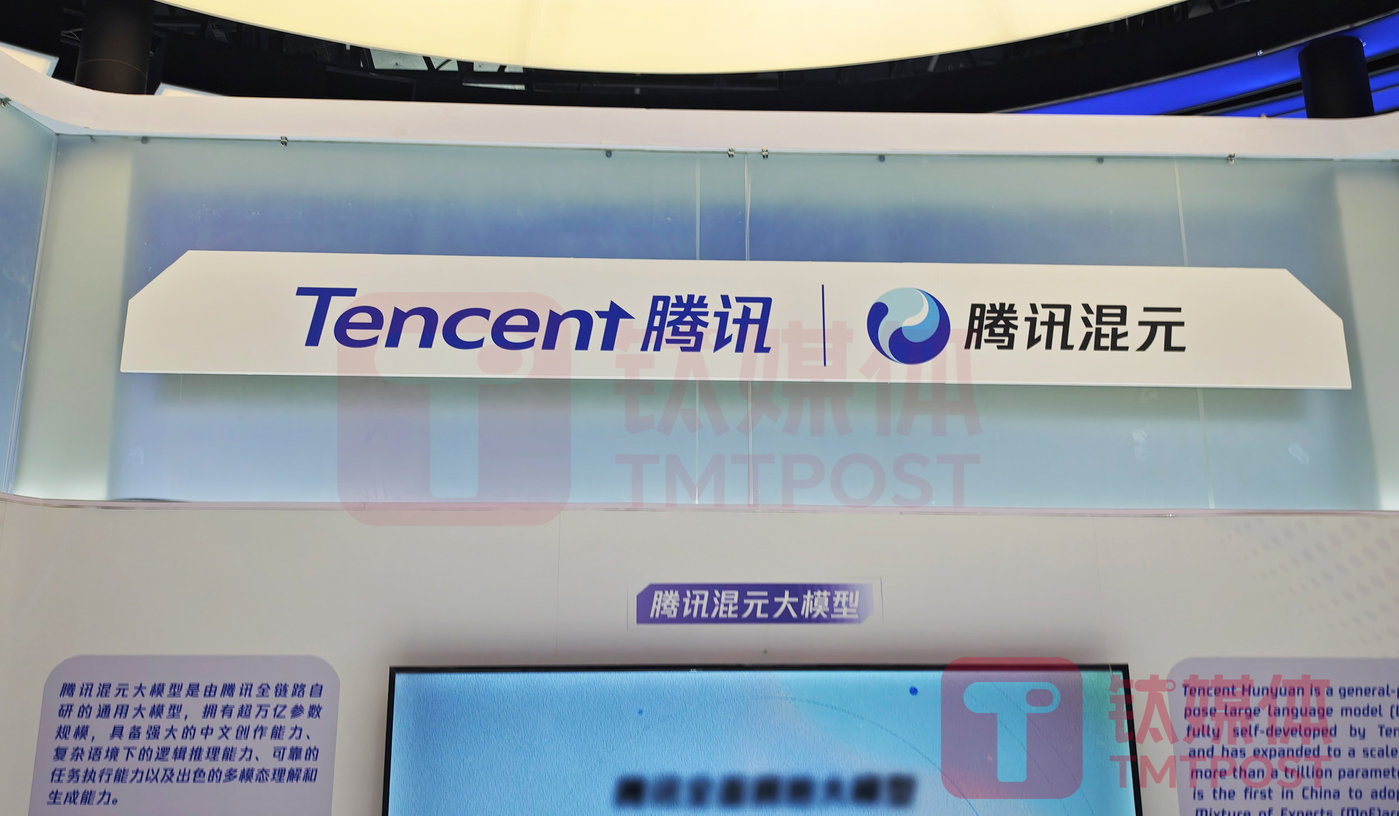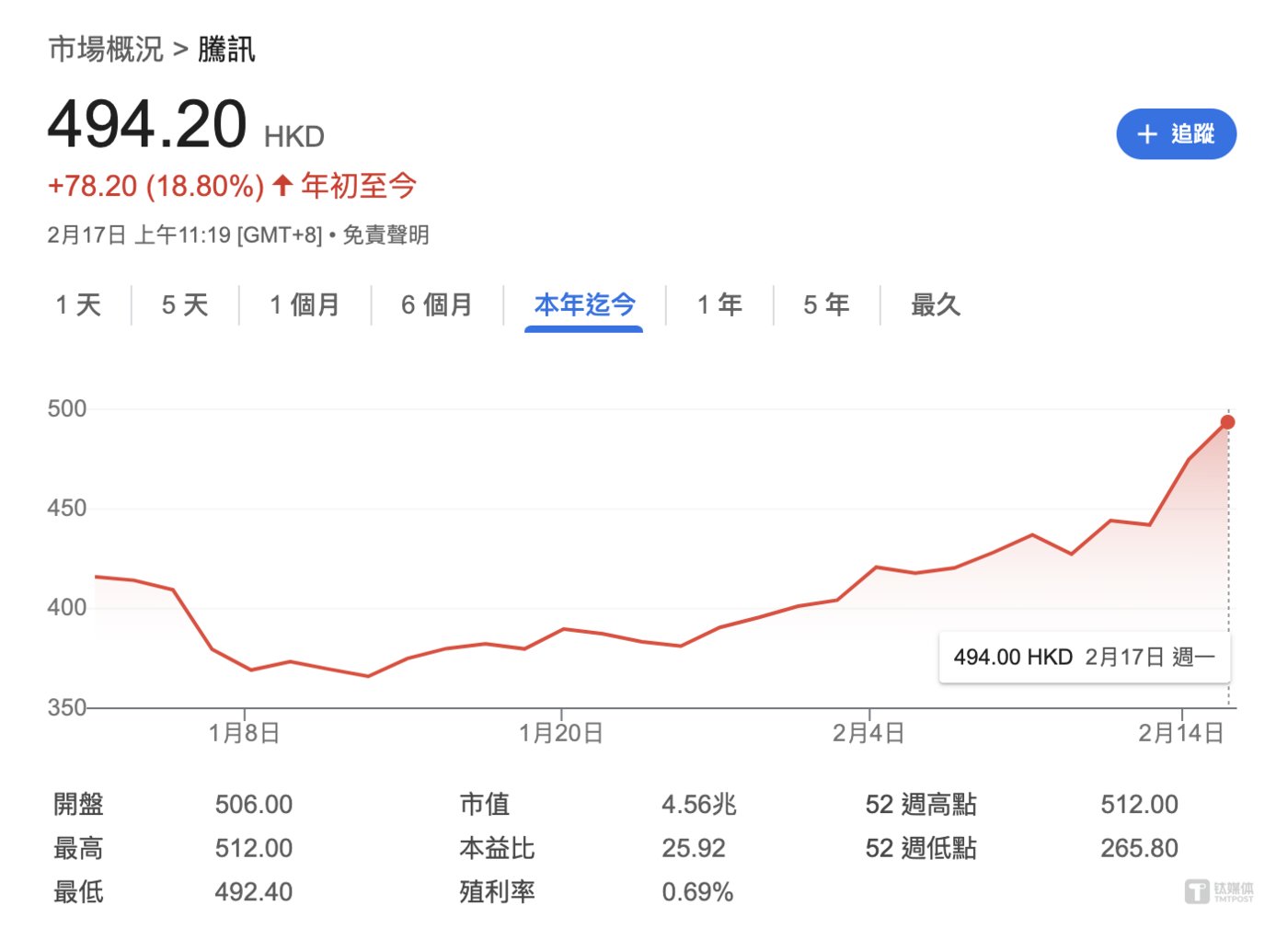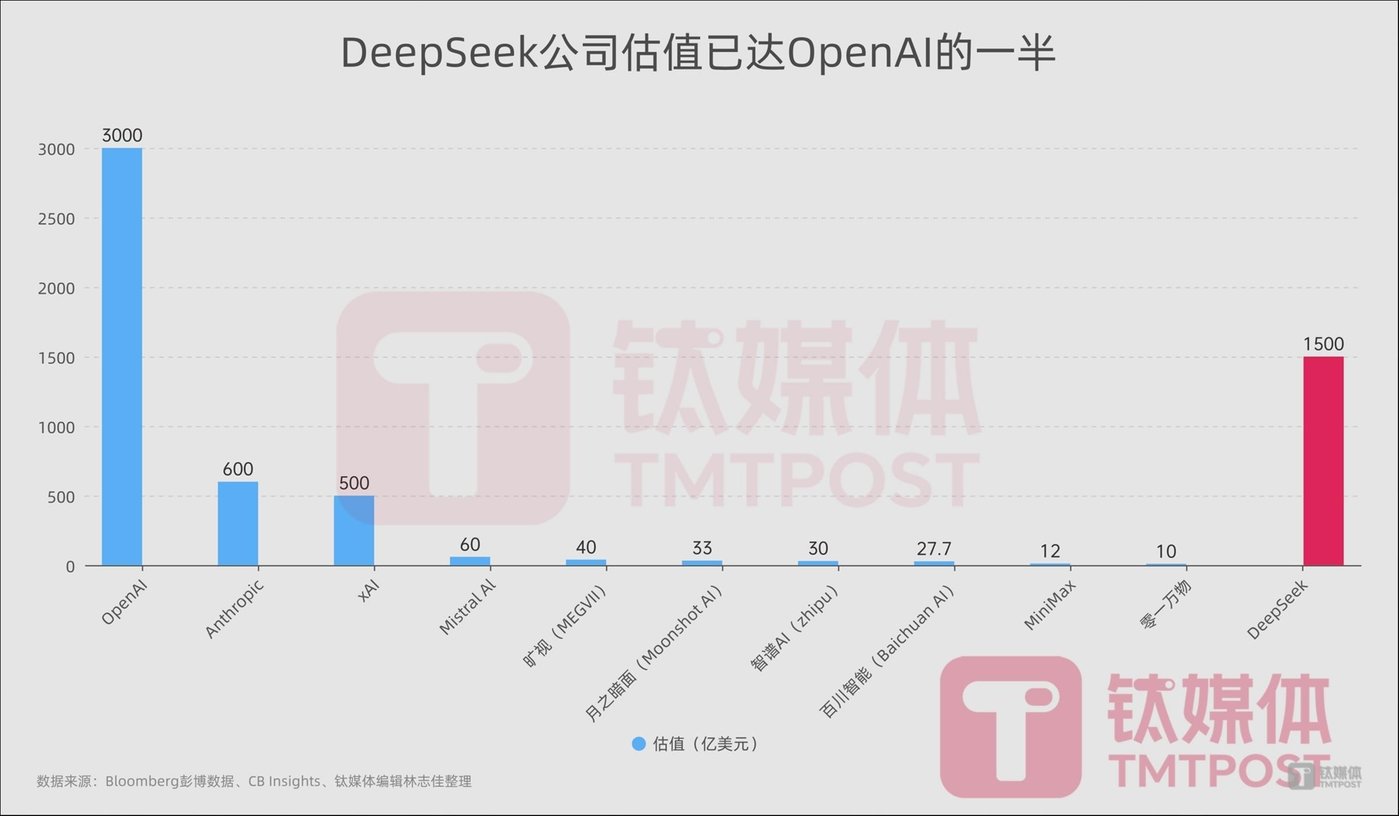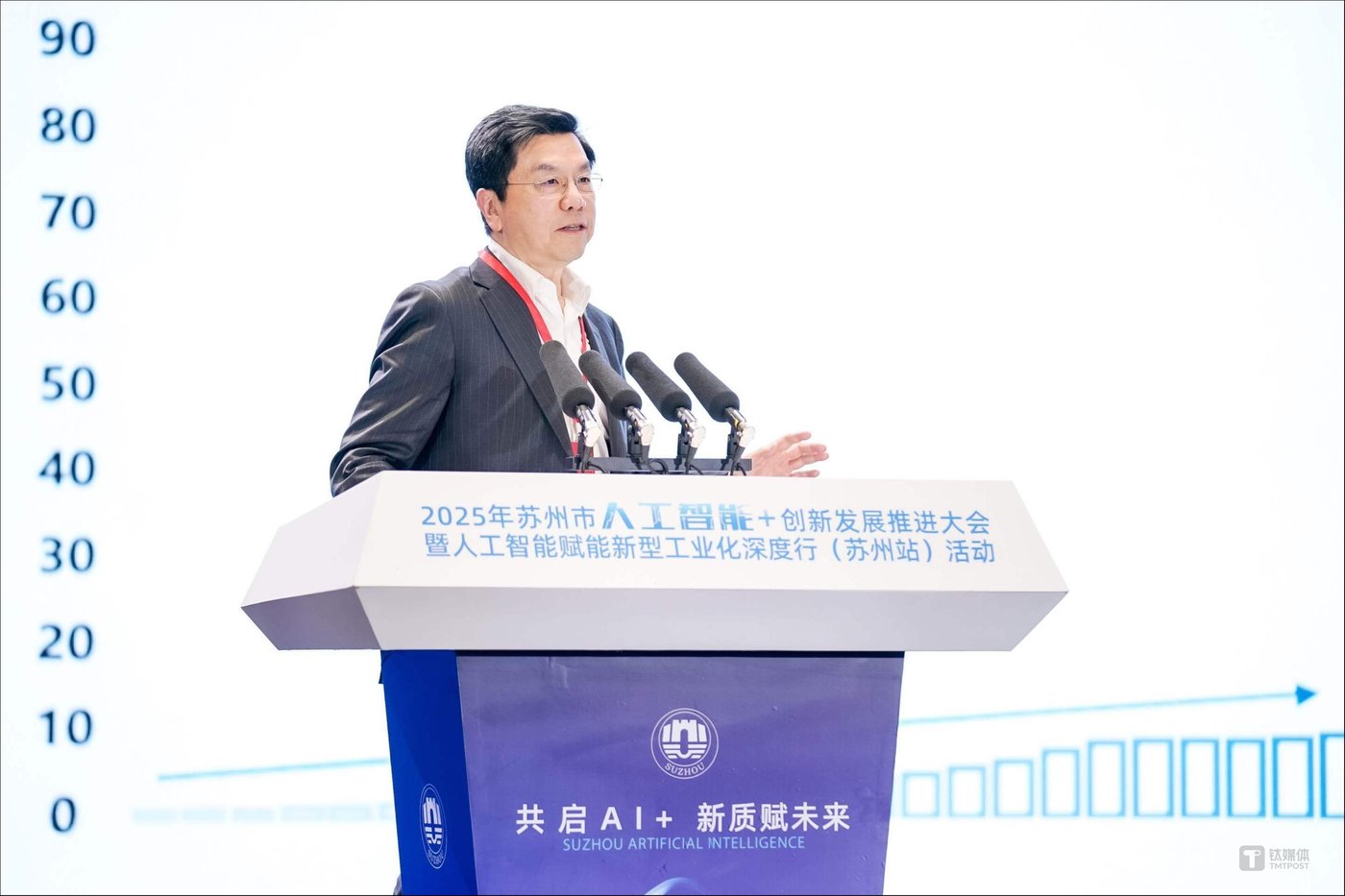
(Photo source: Photo taken by Zhijia Lin, editor of GuShiio.comAGI)
After Tencent WeChat tested AI search and connected to the DeepSeek model, Baidu immediately responded.
GuShiio.comAGI获悉,On the evening of February 16, Baidu Search announced that Baidu Search will fully access the latest in-depth search functions of DeepSeek and Wenxin Model. At the same time, in order to serve developers and friends to invoke various model capabilities to create and tune agents, the Wenxin Agent platform will be fully connected to DeepSeek.
At the same time, Tencent confirmed on the 16th that WeChat has launched the AI search function and officially grey-tested the DeepSeek-R1 model to provide in-depth thinking services.
Tencent said that some users who have been qualified for the test can see the AI search words in the search entry at the top of the WeChat dialog box. After clicking to enter, they can use the DeepSeek-R1 full-blood model for free and enjoy a more diversified search experience. If the entry is not displayed, it means that this grayscale test has not covered the user account yet. The WeChat team is gradually expanding the scope of the test, and you can wait patiently for the subsequent opening. In addition, many Tencent products such as Tencent Yuanbao, QQ Browser, and QQ Music are all connected to the DeepSeek model.
However, WeChat began to be fully loaded less than a day after it was launched. At around 23 pm on February 16, GuShiio.comAGI learned that users used WeChat AI to search, and the final interface began to display Sorry, the service was busy, please try again later.

Goldman Sachs ‘latest research report pointed out that Tencent is one of the first China CSP (Cloud Service Provider) companies to deeply think about models and implement search functions with the DeepSeek-R1- 671B model. Using Tencent’s unique WeChat content to provide enhanced reasoning capabilities, and Tencent Cloud AI provides reasoning infrastructure support, Goldman Sachs believes that this highlights Tencent’s multiplier strategy on the AI open platform, using internal (mixed) and external models (such as DeepSeek), hoping to create an AI ToC killer application and AI Agent agent ecosystem in China.
But at the same time, the DeepSeek craze has also made other companies feel low.
Among them, Liang Rupo, CEO of ByteDance, recently reflected on DeepSeek and believed that the long-chain thinking model, one of DeepSeek R1’s innovations, is not the first in the industry. After OpenAI released its long-chain thinking model in September last year and became a hot topic in the industry, Byte realized major changes in technology, but the follow-up speed was not enough. If it had paid attention to it in time, it would have a chance to realize it earlier; while the big model Six Tigers (Intelligent Spectrum AI, Baichuan Intelligence, Step Star, One and One Things, Dark Side of the Moon, MiniMax) gradually differentiated and made different development choices.
In terms of the capital market, on the morning of February 17, affected by the above news, Hong Kong stocks Tencent Holdings (0700.HK) once rose by more than 7%, and the latest increase was 3%, at about HK$494/share, a cumulative increase of 18.8% year-to-date;In addition, Zhihu (02390.HK) rose more than 18%, Tencent Music (01698.HK) rose more than 7%, and Baidu Hong Kong stocks (09888.HK) fell more than 5%.

Second half of the big model: Six tigers accelerate their differentiation
Entering 2025, a new round of DeepSeek craze is coming,A recent survey of seven people in the AI field by Bloomberg data shows that DeepSeek is expected to be valued between US$1 billion and more than US$150 billion, with the median value of the valuation range being US$2 billion to 30 billion.
According to the Bloomberg Billionaires Index, if valued according to the above data, Liang Wenfeng, who holds 84% of the shares, will rank among the richest technology tycoons in Asia with a value of US$126 billion, and may even surpass Nvidia CEO Huang Renxun, who is worth US$118 billion.

According to GuShiio.comAGI statistics, Anthropic, founded by former OpenAI employees and invested by Google and Amazon, is valued at US$60 billion; Mistral AI, founded by Google and Meta researchers, is valued at US$6 billion. Domestic peer Intelligent Intelligence AI completed a new round of financing of 3 billion yuan last year, with a pre-investment valuation of 20 billion yuan.However, DeepSeek is unique, and the company’s valuation is higher than the sum of the six big model tigers.
Today, under the impact of DeepSeek, the six tigers, a large model with a domestic valuation of up to 20 billion yuan, have stood at a new crossroads and made different development choices: some choose to continue to devote themselves to the research and development of new models and explore more possibilities for industrial implementation; some choose to embrace the DeepSeek model and use its advantages to open up new business landscapes.
The first is zero and ten thousand items.
Before the launch of DeepSeek-R1, Kai-Fu Lee, CEO of Zero One and Chairman of Innovation Works, publicly stated that the company will no longer pursue training super large models. Lightweight models with moderate parameters, excellent performance, faster reasoning speed, and lower reasoning cost are more suitable for commercial scenarios and will become a catalyst for the explosion of AI-First applications, and PopAi, an overseas AI application owned by Zero One, has connected to the DeepSeek model.
On February 14, the industrial model base jointly established by Zero One and Suzhou High-tech Zone was officially awarded. One Everything revealed that the base will focus on creating industry large-scale model solutions in multiple fields such as manufacturing, finance, medical care, and government affairs, and join hands with China Xiusan Group, Hypermedia Group (formerly Modern Communication Group), Innovation Qizhi, and Beiyang. Leading industry chain partners such as Quantitative, Chengyuan Technology, Qiongche Technology, and Suirui Technology are the first to explore the industrialization path of large-scale model technology from the laboratory to the production line.

Kai-Fu Lee said that at the critical juncture of AI technology restructuring the industry, the big model is by no means a castle in the air, but the core engine driving the real economy. At a time when the performance of base models continues to improve, applications will bloom in a hundred flowers, which provides the China team with unprecedented opportunities of the times. 2025 is the first year of AI-First application explosion. Suzhou, with a solid industrial foundation and rich application scenarios, is exactly the best experimental field for the implementation of large industrial models.
At present, everything has launched industrialization exploration of large-model capabilities in the fields of retail, finance, games, energy, etc., and has carried out in-depth cooperation with leading companies including Fortune 500 companies. Large-model ToB solutions have also been recognized by customers such as China Mobile, Alibaba Cloud, Huawei, Yum China, SF Express Technology, Kidking, Meitu, and Feishu.
As early as the beginning of this year, Zero One announced the joint laboratory for industrial models built with Alibaba Cloud: the Ali Tongyi series of large models will serve as teacher models with strong general capabilities; Zero One has internationally cutting-edge cost-effective model capabilities, capable of agile batch training vertically oriented industrial models, jointly accelerating the industrial implementation of large models, and broadening the ecological prospects of large models.
Zhou Jingren, CTO of Alibaba Cloud, said that large models and deep integration with the industry are the only way for China to start the era of comprehensive intelligence. Alibaba Cloud and Zero Everything have cooperated to establish the Joint Laboratory for Industrial Large Models, hoping that through the collaborative evolution of large and small models, they can accelerate the empowerment of real industries and prosper the application ecosystem of large models for thousands of industries. Suzhou has a solid industrial foundation and rich implementation scenarios in the fields of manufacturing, finance, medical care and other fields. It is an excellent base for incubating innovative applications of large-scale industrial models.
Secondly, in terms of Step Star and MiniMax, both companies have begun to connect to the DeepSeek model.
On February 16, Step Star’s latest Leaking App was connected to the DeepSeek-R1 model; at the same time, the overseas version of MiniMax 01 has launched the DeepSeek-R1 deep thinking mode.
Yan Junjie, founder and CEO of MiniMax, said that MiniMax’s plan for 2025 is open source. ldquo; If you re-elect, you should open source on the first day. Because open source can accelerate technological evolution.& rdquo;
And Baichuan Intelligent continues to raise the AI medical track in the near future. On January 25, a new model Baichuan-M1-preview was released, with language, visual and search reasoning capabilities. On February 13, an AI pediatrician built with Baichuan-M1 as a base took up his post in Beijing after nearly a month of internal testing.
News shows that on the same day, Beijing Children’s Hospital held the first parallel multidisciplinary consultation between AI pediatricians and multidisciplinary experts in China. In addition to 13 experts from multiple departments, the participants also included the “AI pediatrician” jointly developed by the hospital, Baichuan Intelligence and Xiaoerfang Health Technology (a medical data company invested by Baichuan).
Participants conducted a multidisciplinary consultation on a child with a skull base mass accompanied by tic symptoms. On the other hand, engineers entered the patient’s chief complaint and medical records into the model. ldquo;AI pediatricians also gave suggestions that were highly consistent with the expert group’s consultation results.” rdquo;
Finally, the dark side of the moon and intelligent AI still choose the power model and agent application.
On January 25, a few hours after the DeepSeek-R1 model was released, Dark Side of the Moon released the Kimi k1.5 multimodal thinking model, which attracted attention. At the same time, it is reported that the Dark Side of the Moon will launch a large model that will continue to obtain SOTA results.
In early February, OpenAI’s latest paper,”Competitive Programming with Large Reasoning Models”, stated that two China AI companies had independently discovered the secret of o1 at the same time. In the introduction, the two China AI companies had independently discovered the secret of o1. In addition, OpenAI also pointed out that DeepSeek-R1 and Kimi k 1.5 respectively improve the mathematical and programming performance of large models through CoT,
As an AI unicorn company that benchmarked OpenAI, Smart Spectrum AI will not connect to the DeepSeek model for the time being, but will choose to add Agent agents. The newly released Agenda GLM (a system-level large model developed by Smart Spectrum specifically for mobile phones) has been launched on Samsung’s latest Galaxy S25 series mobile phones, providing real-time voice and video calls based on AI, as well as functions such as visual understanding and system function invocation, AI search, and copywriting. In addition, Zhimu is also cooperating with the AI drawing application Pinta.
The latest report from international investment bank Morgan Stanley predicts that the AI market is dividing. DeepSeek has changed the narrative of the AI industry and demonstrated the rewards of not taking the unusual path. The concept that only a few companies in the world can meet the conditions and use extremely powerful chips and infrastructure to provide impetus for AI development is no longer true. Companies that can afford entry costs are no longer limited to a few industry leaders.
Morgan Stanley points out that the DeepSeek craze has prompted some companies to pay high prices to stay ahead; but for the other camp, AI is the cost center, and for these companies, what is pursuing is more convenient tokens.
“We believe that market winners will ultimately be companies that can quickly scale up and commercialize new technologies. As the market enters the promotion stage, we are gradually optimistic about participants in the AI model, and believe that starting from the second half of 2025, there will be better opportunities for the recovery of edge devices. rdquo; Morgan Stanley believes that today’s AI craze is a bit like the Internet popularity in 1995. At that time, everyone expected Cisco, or AltaVista, or Hotmail to win the competition, but Amazon provided the cheapest service per second token and became the ultimate winner.
Traditional search will be transformed by AI
As Baidu Search, Baidu’s core and trump product, and Tencent’s core WeChat, have successively connected to the DeepSeek model, this may mean that the traditional search market will be reshuffled, and people’s search methods and experiences will be in the near future. There will be radical changes in the future.
According to the Securities Times, Tencent also provided further explanations on some relevant details.The explanation is as follows:
- 1. Does the data source of AI search include public accounts? DeepSeek, which is connected by WeChat AI search, supports online search (users do not need to manually select). Based on rich WeChat ecosystem content such as public accounts, as well as high-quality content across the network, it can provide users with more comprehensive and high-quality answers.
- 2. Is AI search fully available? This capability is currently under grayscale testing and will continue to be optimized based on user experience and feedback.
- 3. Why should WeChat search scenarios be connected to the big model? Large models can improve the intelligence and accuracy of search, such as better understanding users ‘search intentions, analyzing and processing complex query content, etc. Based on user needs, Tencent has connected large models including Hunyuan and DeepSeek in search scenarios to further enrich users ‘search experience.
- 4. Will AI search use personal information such as my circle of friends and chats in WeChat? AI search only integrates public accounts and other public information on the Internet, and does not use users ‘personal information and related private information.
According to the Shanghai Securities News, Pan Helin, a well-known economist and member of the Information and Communication Economics Expert Committee of the Ministry of Industry and Information Technology, said that for WeChat, it is not difficult to access DeepSeek, especially since Tencent has sufficient computing power and can afford greater traffic. ldquo; Recently, DeepSeek itself has often experienced busy servers due to excessive traffic, and WeChat’s move provides consumers with an alternative.” rdquo;
Public information shows that according to surveys, 59% of netizens have mainly used AI search tools, while traditional searches such as Baidu account for only 22%. The integration of WeChat may accelerate this trend and be particularly attractive to young users.
Pan and Lin believes that WeChat access is also good for DeepSeek, because WeChat expands DeepSeek’s user contact and reduces DeepSeek’s computing power burden.
Zhang Lu, founding partner of Fusion Fund and Silicon Valley investor, recently wrote that today’s college students, especially freshmen and sophomores, and even some high school students, spend a lot of time using AI tools every day. They spend about 70% or 80% of the time using AI applications on their mobile phones. For example, many students almost no longer use traditional Google search, but instead turn to platforms such as ChatGPT and You.com to search through these tools. This suggests that the relationship between people and AI may change faster than we think. From the initial lack of understanding and resistance, to the gradual cooperation, to the current dependence,In the future, AI may become a part of daily life like mobile phones, and everyone will form new habits.
Cheng Yin, Research Manager, IDC ChinaHe said that for AI applications, updates and upgrades of large models will help accelerate the innovation and commercialization of application scenarios.In the future, whether it is applications aimed at improving personal productivity such as copywriting and content generation, online meeting summary, AI assistant, and search, or scenarios aimed at horizontal business functions such as customer service and marketing,Or the commercialization of industry-specific scenarios will be the focus of the market this year.
Cheng Yin emphasized thatDeepSeek leads the basic model to open up another new development paradigm. In 2025, the industry will also pay more attention to the implementation of large models and generative AI. The entire ecosystem should work together to accelerate the innovation and commercialization of application scenarios.



